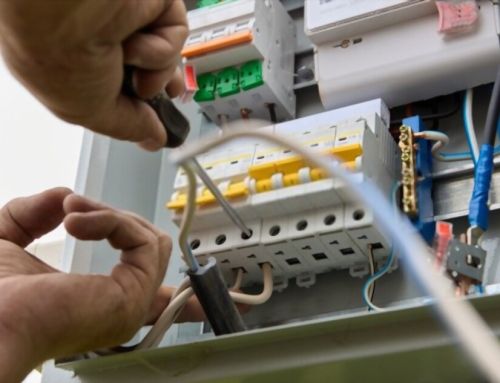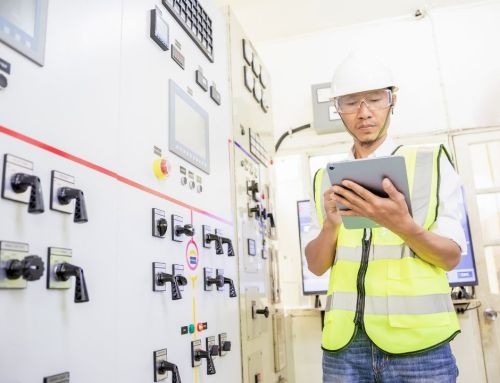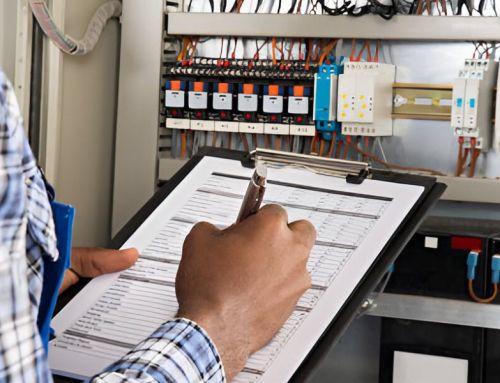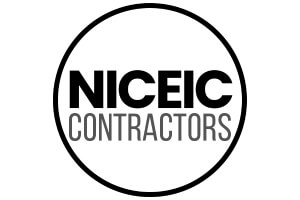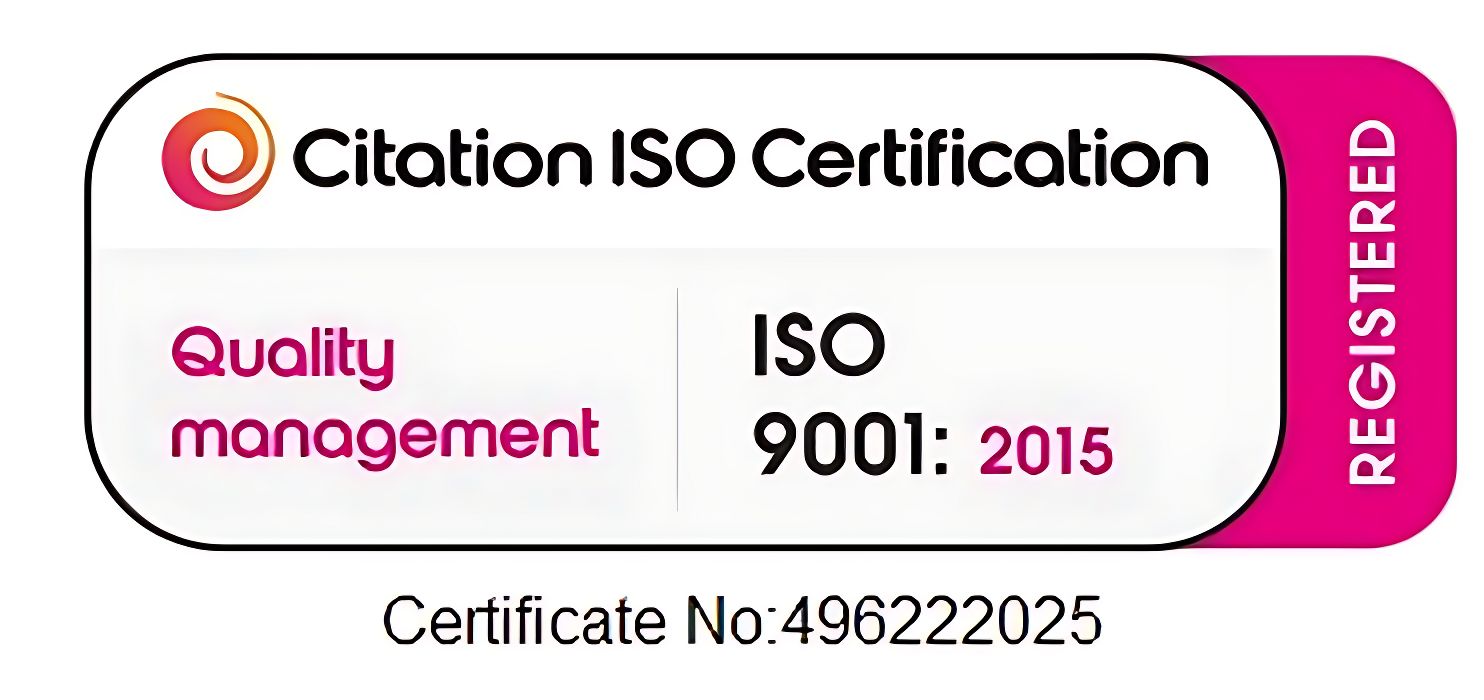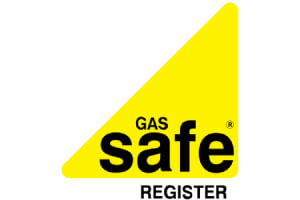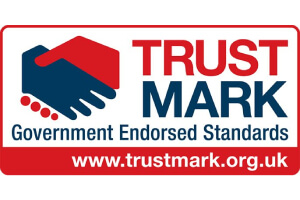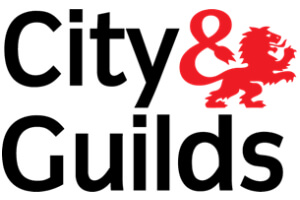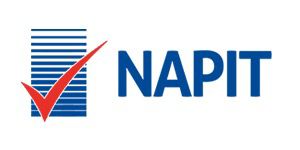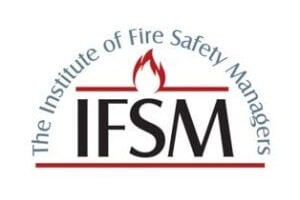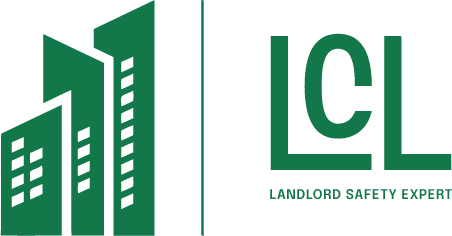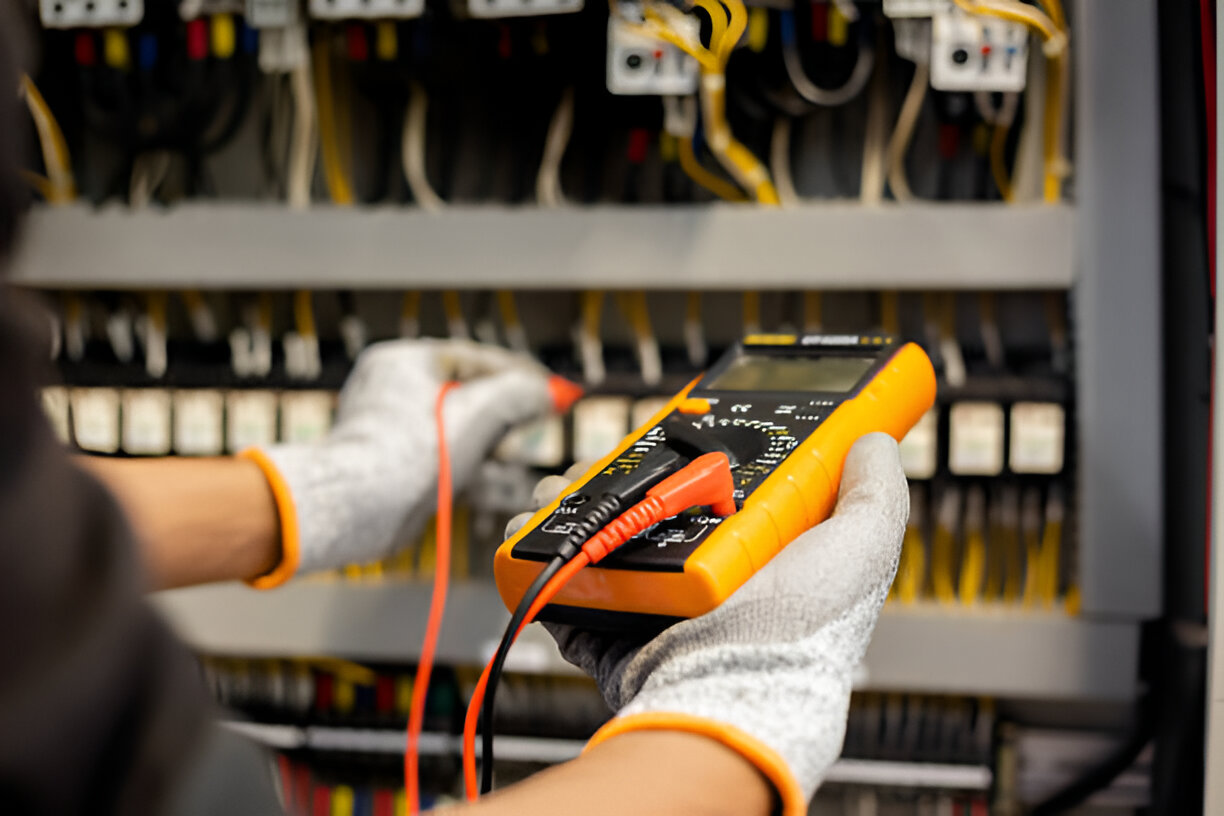
In 2025, homeowners and landlords will face a wide range of costs for Electrical Installation Condition Reports (EICR). Understanding the EICR cost in 2025 is essential for effective financial planning and ensuring compliance with safety standards. Factors such as property size, geographical location, and the complexity of the electrical system will play significant roles in determining the final price. To thoroughly understand EICR costs, it is important to consider the different factors that influence them and their effects.
Key Takeaways
- Average EICR costs for residential properties in 2025 are projected to range from £150 to £300.
- Larger properties or extensive assessments may experience costs exceeding £400.
- Domestic EICRs typically cost less due to simpler regulations and fewer circuits compared to commercial properties.
- Rental properties require EICRs every 5 years, while residential homes should have them every 10 years for safety compliance.
- Factors such as geographical location, electrician expertise, and market demand can influence final EICR pricing.
What Is an EICR and Why Is It Necessary?
An Electrical Installation Condition Report (EICR) acts as an essential assessment of a property’s electrical system systems. This document evaluates the safety, functionality, and compliance of electrical installations, ensuring they meet current regulations.
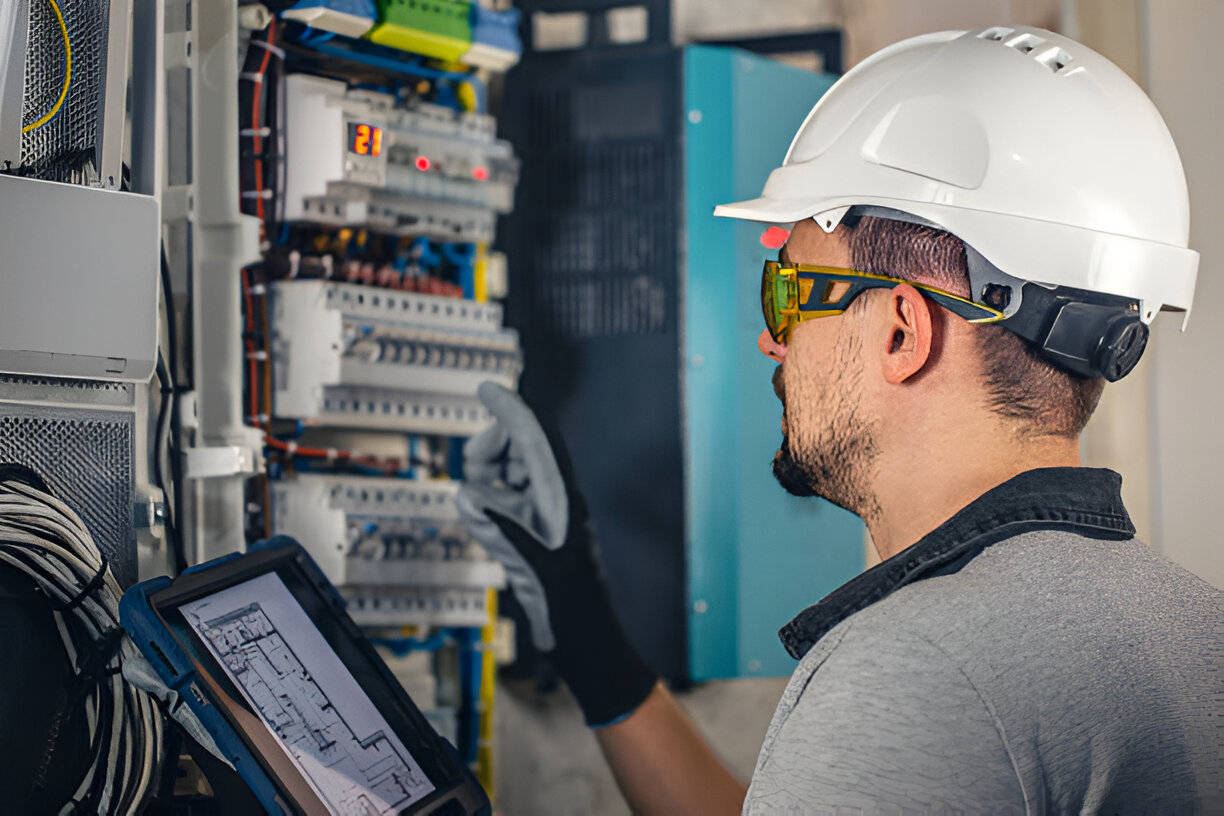
For property owners, an EICR is not merely a legal requirement; it is a proactive measure that reduces risks associated with electrical hazards. By identifying potential issues such as faulty wiring or inadequate earthing, an EICR empowers property owners to take timely action, enhancing safety and promoting energy efficiency.
Additionally, in a rapidly evolving technological landscape, an EICR aids in future-proofing properties, ensuring they are equipped for innovative electrical solutions. Consequently, obtaining an EICR is an important step toward safeguarding investments and fostering sustainable living environments.
Typical EICR Costs Across the UK in 2025
How Much Does an EICR Cost is associated with different factors, such as the property size and complexity of the consumer unit.
In 2025, the average cost of an EICR in the UK is expected to range from £150 to £300 for residential properties, depending on various factors such as size and complexity.
Larger properties or those requiring extensive assessments may incur higher fees, potentially exceeding £400.
Awareness of these averages allows homeowners and landlords to budget effectively while ensuring compliance with evolving safety standards.
As the demand for thorough electrical safety checks grows, staying informed about EICR pricing will empower property owners to make proactive decisions regarding their electrical systems, thereby enhancing safety and innovation in their living environments.
Factors That Influence EICR Pricing
While the average cost of an Electrical Installation Condition Report (EICR) provides a general guideline, several factors greatly influence the final pricing.
The complexity of the electrical installation is essential; older systems or those with intricate wiring may require more extensive assessments, escalating costs.
Additionally, the geographical location plays an important role, as rates often vary between urban and rural areas.
The expertise and reputation of the electrician also significantly impact pricing, with highly qualified professionals typically commanding higher fees.
Moreover, market demand can affect costs; during peak seasons, prices may rise due to increased service requests.
Understanding these variables empowers homeowners and landlords to make informed decisions about their EICR services.
Domestic vs Commercial EICR Costs: What’s the Difference?
The distinction between domestic and commercial EICR costs is significant, reflecting the varying requirements and complexities of each type of property.
Domestic EICRs generally involve fewer circuits and simpler regulations, resulting in lower costs. In contrast, commercial properties often feature extensive electrical systems, necessitating more thorough inspections and higher expenses.
Key differences include:
- Scope of Inspection: Commercial EICRs cover larger areas and more complex installations.
- Time Required: Domestic assessments are typically quicker, while commercial inspections demand more time.
- Expertise Needed: Commercial properties often require specialised knowledge for compliance.
- Regulatory Standards: Commercial EICRs must adhere to stricter regulations, influencing overall costs.
Understanding these differences is essential for homeowners and landlords to budget effectively for electrical safety.
EICR Cost by Property Type: Flats, Houses, and HMOs
When considering EICR costs, property type plays an essential role, as flats, houses, and Houses in Multiple Occupation (HMOs) each present unique challenges and requirements.
Flats typically face lower costs due to their compact nature, simplifying the inspection process. In contrast, houses may demand more extensive evaluations, especially with larger electrical systems, resulting in higher fees.

HMOs, characterised by multiple tenants, often require thorough assessments to meet stricter safety regulations, further increasing expenses. Additionally, the complexity of shared facilities in HMOs necessitates specialised expertise, driving costs up.
Homeowners and landlords must account for these variances when budgeting for EICR services, ensuring they invest wisely in the safety and compliance of their properties.
How Often Should You Get an EICR Done?
Determining the frequency of Electrical Installation Condition Reports (EICRs) is essential for maintaining electrical safety across different property types.
Regular assessments help identify potential hazards and guarantee compliance with current regulations.
Industry standards recommend the following intervals:
- Residential properties:Every 10 years or upon change of occupancy.
- Rental properties:Every 5 years, ensure tenant safety and legal compliance.
- Commercial properties:Every 3 to 5 years, depending on usage intensity.
- Houses in multiple occupation (HMOs):Every 1 to 5 years, reflecting increased electrical demands and occupancy turnover.
What’s Included in the EICR Cost?
Understanding the components that contribute to the EICR cost is essential for property owners and landlords. The primary elements include the initial inspection fee, which covers the thorough examination of the electrical system, ensuring compliance with the latest regulations.
Additional costs may arise from any necessary remedial work identified during the inspection, such as upgrading wiring or replacing faulty components.
Moreover, the complexity of the property, such as its size and number of circuits, can influence pricing.
Finally, travel expenses for the electrician may be factored in, especially for remote locations.
How to Choose a Certified Electrician for EICR Testing
Selecting a certified electrician for EICR testing is an essential step in guaranteeing the safety and compliance of electrical installations.
Homeowners and landlords should consider several vital factors when making this choice:
- Qualifications and Certifications: Verify that the electrician holds relevant certifications, such as NICEIC or equivalent, to confirm proficiency.
- Experience: Look for professionals with a proven track record in EICR testing, particularly in similar property types.
- Testimonials and Reviews: Research client feedback to gauge the reliability and quality of service provided.
- Insurance Coverage: Ascertain that the electrician carries adequate liability insurance to protect against potential damages during the testing process.
EICR Cost vs Value: Is It Worth the Investment?
Is the cost of an Electrical Installation Condition Report (EICR) justified by the benefits it provides?
For homeowners and landlords, investing in an EICR can yield significant long-term advantages. By identifying potential electrical hazards, an EICR enhances safety and mitigates risks of costly repairs or accidents.
In addition, it increases property value, demonstrating a commitment to safety and compliance with regulations. As energy efficiency becomes a priority, an EICR can also highlight opportunities for upgrades that reduce operational costs.
Ultimately, the value derived from ensuring a safe environment and protecting investments can far outweigh the initial expense, positioning the EICR as a prudent investment for forward-thinking property owners.
Frequently Asked Questions
How much does an EICR cost in 2025 for a standard home?
In 2025, the average cost of an EICR for a standard residential property in the UK ranges between £150 and £300, depending on factors like property size and the number of circuits.
- Why do EICR prices vary so much?
EICR costs depend on a variety of elements, including the type and size of the property, location, electrician’s rates, and whether any remedial work is needed after the inspection.
- Is an EICR more expensive for commercial properties?
Yes, commercial EICRs typically cost more due to the larger and more complex electrical systems involved. Prices can exceed £400 or more, depending on the premises.
- Do landlords have to pay for an EICR every time a tenant moves out?
Not necessarily. For rental properties, the law requires an EICR at least every 5 years. However, it’s also recommended after major electrical work or if a new tenant raises safety concerns.
Conclusion
In summary, understanding how much does an EICR cost is essential for homeowners and landlords alike. With average prices ranging from £150 to £400 in 2025, various factors influence these costs, including property type and location. Regular EICR assessments guarantee compliance with safety standards and protect property value, making the investment worthwhile. By choosing a certified electrician, property owners can confirm their electrical systems are safe and up to code.
About the Author: LandlordCertificate
Related Posts
Get Social
Recent Posts
- Fire Risk Assessment Review as a Driver of Stronger Safety Control
- Comprehensive EICR London Services for Every Property
- System Planning for Large Buildings with Fire Alarm Installation
- Fire Service Fire Risk Assessment for Stronger Safety Management
- Electrical Risk Clarity Improved Through an EICR Report


